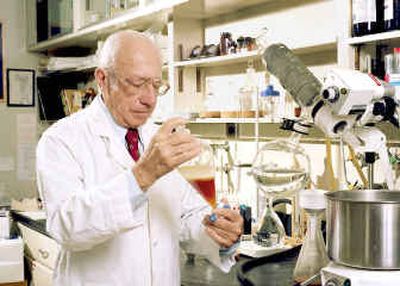Still popular, Valium has mixed legacy

AKRON, Ohio – There once was a cure for the desperate housewife. It was called Valium.
Today, there are those who would argue that the “chill pill” was more curse than cure because of its addictive qualities. But there is no doubt that Valium – still widely used, though more carefully prescribed – is a cultural icon.
It all started with the Great Tranquilizer War of 1954.
Leo Sternbach, a Croatian chemist working in the New Jersey lab of Hoffman-LaRoche Inc., was under the gun to create something to compete against Miltown, an anti-anxiety drug from a rival pharmaceutical company. His superiors suggested he try tinkering with the chemicals used in Miltown, just enough to avoid a patent lawsuit.
But what kind of challenge was that? Instead, Sternbach opened his own portfolio and looked over compounds he’d been developing early in his career in Poland. Poland must have seemed a lifetime away.
Sternbach was raised and educated there before accepting a job at the Swiss LaRoche firm.
Then in 1941, as Nazi occupation of Switzerland seemed imminent, the company sent its Jewish scientists to the United States. And so Sternbach found himself helping to organize a new LaRoche lab in Nutley, N.J.
When the tranquilizer war started, Sternbach eagerly joined the fray. It dealt with a class of chemicals to which he was partial. But the patience of his bosses had limits, and after two years’ research, Sternbach was told to turn his attention to antibiotics.
Sternbach was nothing if not stubborn. A visitor to his lab would have seen his work on antibiotics moving forward, but a closer look at his blackboard would have revealed the blueprint for a tranquilizer.
In 1957, Sternbach created a compound that would come to be marketed as Librium. He concealed it for six months, unsure how to explain to management what he’d been up to. When he finally filled them in, they were thrilled. Tests showed the drug relaxed mice and cats while not causing any apparent side effects.
Librium hit the market in 1960, but Sternbach was already developing its blockbuster sequel, a pill with more applications at a smaller dose. And in 1963, Valium rolled into pharmacies – and into the history books.
From 1969 to 1982, Valium was the most prescribed drug in the country, with Americans ingesting 2.3 billion of the little pills a year.
Women were its biggest fans, popping them like candy to take the edge off a stressful day – a practice immortalized in the Rolling Stones’ hit “Mother’s Little Helper.”
Valium was seen as a safe replacement for barbiturates (drugs associated with the overdose deaths of Jimi Hendrix and Marilyn Monroe). And because it didn’t slow breathing, it couldn’t be used for suicide.
But it soon became clear that medical testing had either overlooked or underplayed one important fact: Valium was very addictive.
After some well-publicized celebrity struggles with the drug, it became the focus of a congressional hearing, lawsuits and a public awareness campaign.
Today, doctors are more careful about writing Valium prescriptions, but the drug is still a popular treatment for things like insomnia, convulsions, phobia disorders and calming pre-surgery jitters.
Sternbach, now 97, has spent much of the past two decades defending the drug. In one interview, he said if he had the chance to go back in time, he wouldn’t change a thing. He reminded his critics that anything can be abused, but said that shouldn’t detract from the good Valium does for those who handle it responsibly.
“Not enough people kept in mind the suicides that were averted and the marriages that were saved,” he said.